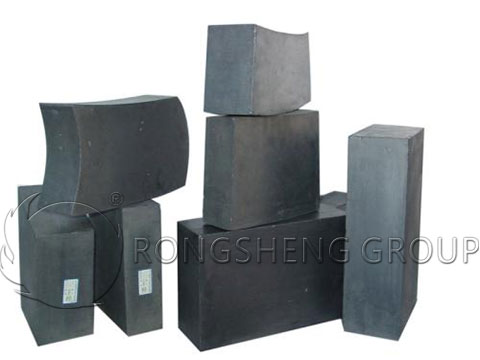RS Cheap refractory brick manufacturer, based on years of experience in the production and sales of refractory bricks, as well as the damage characteristics of our refractory brick linings during actual use, has summarized the two main reasons for the damage of magnesia carbon bricks.

The damage process of magnesia carbon bricks. The damage of magnesia carbon bricks is first caused by the oxidation of carbon in the bricks, forming a decarburized layer. In addition, the thermal expansion rates of magnesium oxide and graphite are very different at high temperatures. At 1000°C, they are 1.4% and 0.2% respectively, resulting in loose tissue structure and reduced strength. After being eroded by slag, mechanical erosion, etc., the magnesium oxide particles in the bricks are gradually eroded and fall off layer by layer, causing damage to the magnesia carbon bricks. The damage process of https://cheapfirebricks.com/magnesia-carbon-brick is: oxidation → decarburization → loosening → erosion → erosion → falling off → damage. A large amount of research work has proven that above 1600°C, the following reactions are the main reasons for the damage of magnesia carbon bricks.
MgO(s)+C(s)→Mg(g)+CO(g) (1)
The damage to magnesia carbon bricks is first caused by the oxidation of carbon in the hot surface of the working lining, forming a thin decarburization layer. The oxidation of carbon is the result of continuous oxidation by iron oxides in the slag and O2 in the air as well as CO2, SiO2 and other oxides. And the vaporization effect of MgO dissolved in molten steel or bricks on carbon. Secondly, high-temperature liquid slag penetrates into the pores of the decarburized layer or cracks caused by heat, and reacts with the magnesium oxide in the brick to form a low melting point compound. Causes the surface layer of bricks to undergo qualitative changes and weaken. Under the action of strong steel slag agitation, mechanical erosion and other stresses, the layers of magnesia carbon bricks fall off layer by layer, causing damage to the magnesia carbon bricks. Repeating this cycle, the furnace lining becomes thinner layer by layer, and eventually the furnace is repaired, repaired, and stopped.
(1) Oxidation of Carbon
The damage of magnesia carbon bricks is first caused by the oxidation of the carbon in the bricks. The oxidation of carbon proceeds through the following reaction:
Fe0+C→Fe+CO (2)
O2+2C→2CO (3)
CO2+C→2CO (4)
SiO2(s)+C(s)→SiO(g)+CO(g) (5)
MgO(s)+C(s)→Mg(g)+CO(g) (6)
Due to the oxidation of carbon, the carbon network structure in the brick is destroyed, resulting in loose tissue structure, reduced product strength, increased pores, and intensified erosion of the brick by slag.
(2) Influence of Pores
The pores in magnesia carbon bricks, especially open pores, have an important impact on the damage of magnesia carbon bricks. During the use of magnesia carbon bricks, the oxidation damage of carbon is mainly caused by the pores, which in turn intensifies the erosion of the brick lining by the slag, thereby causing damage to the magnesia carbon bricks. Open pores present in the brick that draw air in from the outside as it cools. During reheating, the oxygen in the air reacts with the surrounding carbon to generate CO and is discharged. This process repeats itself, causing the porosity to increase. In addition, the binder present in magnesia carbon bricks is an important factor in the generation of pores.
As the binder of magnesia carbon bricks, phenolic resin is generally used. By adding 3% to 4% phenolic resin, the porosity after molding is low, about 3%. However, during use, the phenolic resin is heated and decomposed, producing H2O, H2, CH4, CO, CO2 and other gases that evaporate and are emitted. The gas evaporation path forms pores, which also increases the porosity. In this way, the oxygen present in the air and the oxides in the slag will corrode the bricks through the pores. On the one hand, it promotes the oxidation damage of carbon, on the other hand, it intensifies the reaction between slag and MgO in the bricks, causing damage to magnesia carbon bricks. This process starts over and over again, through the oxidation of carbon and the erosion of slag. On the one hand, it destroys the carbon network structure in the brick, making the organizational structure loose and the high-temperature strength reduced. On the other hand, low melting point compounds are formed on the surface of the bricks, which weaken and deteriorate. As a result, the magnesia carbon bricks fall off layer by layer under the action of strong steel slag agitation, mechanical erosion, thermal shock and other stresses, causing damage to the magnesia carbon bricks.